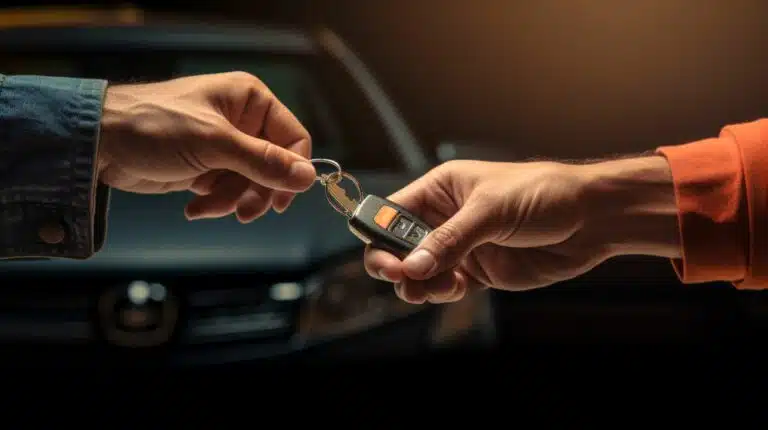reasons and solutions for the ABS light turning on in your vehicle

The warning light for ABS on your vehicle’s dashboard is a signal that should not be taken lightly. This icon indicates the possibility of a failure in the brake system, a crucial component for your safety while driving. Since its mandatory implementation in all new European cars in 2004, the anti-lock braking system has demonstrated its importance, particularly in sudden braking situations or on slippery surfaces. In this article, we will explore the reasons behind the ABS light being illuminated and the solutions to ensure that your vehicle maintains its functionality and safety on the road.
The brake system of a vehicle is crucial for road safety, and one of the most important alerts is the warning light for ABS (anti-lock braking system). If this light comes on, it may indicate a problem that needs immediate attention. In this article, we will explore the most common reasons why the ABS light may illuminate and the appropriate solutions you can consider.
Understanding ABS
Before delving into the causes of the ABS light being illuminated, it is essential to understand how this system works. The ABS prevents the wheels from locking during sudden braking, allowing the driver to maintain control of the vehicle, especially on slippery surfaces. It has been a mandatory system in new vehicles in Europe since 2004 and plays a vital role in road safety.
Key Components of ABS
The proper functioning of the ABS depends on several components, including:
- Wheel speed sensors: They detect the speed of each wheel.
- Hydraulic units: They regulate braking pressure to prevent wheel locking.
- Electronic control unit: It analyzes the data from the sensors and adjusts braking accordingly.
Common Causes of the ABS Light Illuminating
Failure of Speed Sensors
Speed sensors are essential for the operation of the ABS, as they provide accurate information about the rotation of each wheel. If one of these sensors fails, either due to wear or defect, it can illuminate the ABS light. Fortunately, in many cases, a simple cleaning or replacement can resolve the issue.
Electrical Issues
Electrical issues, including short circuits or damaged wires, can also trigger the ABS light. These failures require a thorough inspection of the wires and connectors. In many situations, a simple repair may be sufficient to fix the alert.
Failure of the Hydraulic Block or ABS Control Unit
More complex cases may involve failures in the hydraulic block or the ABS control unit. These parts often require more specialized technical intervention, and given their cost, it is advisable to consult an expert for an accurate diagnosis.
Actions to Consider if the ABS Light Remains On
Consult the Owner’s Manual
The first thing you should do upon seeing the ABS light illuminated is to consult your owner’s manual. This document can provide you with specific instructions on how to proceed based on your vehicle model, as well as useful tips for diagnosing the initial problem.
Visual Check
A visual check of the wires, fuses, and brake fluid levels is also a good practice. Many minor issues can be resolved with a simple verification and restoration of these elements.
Consult a Professional
If after these steps the ABS light remains on, it is advisable to consult a mechanic. A professional has the experience and equipment necessary to perform an accurate diagnosis and proceed with the appropriate repairs.
Is it Dangerous to Drive with the ABS Light On?
Safety Consequences
Driving with the ABS light on can jeopardize your safety, especially in emergency braking situations. Without the proper functioning of the ABS, there is a higher likelihood of the wheels locking, which might lead to loss of control of the vehicle.
Risks on Slippery Road Conditions
On slippery or wet surfaces, the lack of ABS increases the chances of experiencing aqua planing or skidding. Although the vehicle may seem to be operating normally, the absence of ABS represents a latent danger that should not be underestimated.
How to Resolve ABS Issues
Accurate Diagnosis
Having a precise diagnosis is key to effective repair. A qualified mechanic can identify the exact source of the problem using advanced diagnostic tools, which is essential to avoid unnecessary repairs.
Preventive Maintenance
Regular maintenance of your vehicle is crucial to prevent the ABS light from illuminating. This includes periodically checking the sensors, wires, brake fluid levels, and replacing worn parts before they cause malfunctions.
Using Specialized Services
In some cases, it may be necessary to seek specialized service for complex repairs or replacement of specific parts, such as the ABS control unit. Although these repairs can be costly, investing in your vehicle’s safety is crucial.
Impact of ABS on Technical Control
Current Regulations
In Europe, driving with the ABS light on is not only dangerous, but may also result in a failure in technical control. Regulations require that all safety systems, including the ABS, function properly during this mandatory inspection.
Consequences of a Failure
If your vehicle fails the technical control, you may face financial and administrative consequences, such as being prohibited from driving until repairs are made, additional costs related to repairs and the new inspection, as well as potential penalties during a roadside check.
Tips to Prevent the ABS Light from Coming Back On
Regular Maintenance
Regular maintenance is essential to avoid problems with the ABS. A periodic review by a professional can prevent many issues from affecting the operation of the anti-lock system.
Aware of Warning Symptoms
Pay attention to any abnormal behaviors in your vehicle, such as the intermittent illumination of the light or brakes that function differently, which can help detect emerging problems.
Investment in Quality Components
When making repairs, choose quality and guaranteed replacement parts. It’s not only an investment in your vehicle, but also in your safety.
The ABS light illuminated on your vehicle’s dashboard is a signal that should not be taken lightly. This warning indicates a possible failure in the brake system, which can severely compromise your safety while driving. There are various reasons why this symbol may activate. Among them are the decomposition of the wheel sensors, which are vital for the proper operation of the ABS system. If these sensors wear out or fail, they can cause the system to malfunction, resulting in the light being illuminated. Other issues may include electrical failures due to faulty connections or short circuits affecting the system.
Furthermore, the hydraulic block or the ABS control unit may experience more complex failures that require specialized technical attention. Therefore, it is crucial to act quickly if the ABS light comes on, as continuing to drive under these conditions increases the risk of accidents.
The good news is that effective solutions exist to address this problem. First, consult the owner’s manual for specific guidelines regarding your vehicle model. A visual check of wires, fuses, and brake fluid levels may lead to the identification of minor failures that can be easily resolved. If the light remains on, seeking help from a professional is the next step, as they have the necessary experience and tools to perform an accurate diagnosis.
Additionally, performing regular maintenance on your vehicle is vital to prevent the issue in the future. Periodic review of the brake system components, as well as the use of quality parts during repairs, are actions that contribute to keeping the ABS system in optimal condition and ensuring safe driving.




